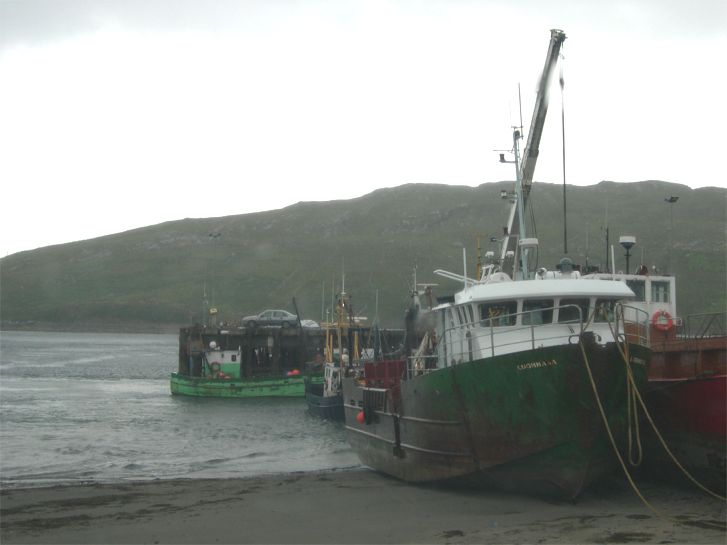SEA-ANGLING-IRELAND.ORG
everything you need to know, all on one site...
|
SEA-ANGLING-IRELAND.ORG everything you need to know, all on one site... |

|
|
Cloughmore
Harbour, Achill Island, Co. Mayo There are effectively three marks here. In this Aerial Photograph, courtesy of the Marine Institute, the marks are labelled A, B and C. (A) The first is not on the jetty but off to your left in the picture and up to the first elbow, which will leave you placed on a weedy shore under a fish factory (you'll smell it even if you can't see it!). Here you can watch the otters chase the sea trout of an eveing through the twisting currents generated by Achill Sound emptying out on the ebb tide. If you want to try to cheat them of their dinner, get yourself a licence from the North Western Regional Fisheries Board and try a small silver spinner whipped across the top of the water. A german sprat is ideal or you can try SWFF (salt water fly fishing). A very fast retrieve allows you keep the spinner (the weed can be appalling) and it mimics the startled sand eels that the sea trout are hunting. At slack water truly huge mullet will often invade this area. It is an ideal spot for the SWFF but mind the currents and dodgy underfoot conditions if you go wading. Again to cope with the weed and currents a floating or slow sinking / intermediate line would be essential and it can often be a quite windy spot. On the jetty itself, an exposed mark but well lit, you have three choices. Fingerling pollack and sandeels frequest the pilings in summer and can often encourage larger fish to venture all the way in. Small jigging rigs will get you nice fresh baits. Down below, and it is often subject to savage currents, you will find Dogfish and Conger Eels, not to any appreciable size but in large numbers, often indeed in plague proportions. The jetty is used to load the feed for the offshore fish farms and if there has been a spill, these hard nuggets are the perfect bait for all the fish that are feeding off them! Faciong towards the massive series of whirlpools and eddy currents, (B) you need a decent cast to get your spinners or feathers out to the margin of the currents. Weed can be soul destroying however from April onwards, however once the sand eel show up, large Pollack to shore specimen size come in with the flood to gorge themselves on them and it is fantastic fishing. I have had a double on a three 6/0 pink Hookai set, with both fish just below the specimen weight - an astonishing fight. If they are in, they are in in numbers and you can have a memorable session. You will pick up Markerel but not with any regularity as they seem to dislike the confined space and vicous currents within the small natural harbour. Finally, if you are a distance caster, facing directly south towards Achill Beag there is a wide and deep hole, (C), well over 20 metres deeper than the surrounding area, at around 100-120 metres range off the jetty. This is often impossible to reach if there are supply ships or trawlers tied up and bear in mind that this is a working port so park your car in the car park at the front and not on the jetty itself. The seabed on this last mark is, as it the whole area, mainly sand and shingle with the odd rock and snag thrown in to keep you honest or interested! You can catch anything in that hole, ranging from Flatfish to Rays, the odd (decent) Turbot through to Wrasse, Ling, Codling and lots and lots of smallish Coalfish, especially in the winter. A few local youths often freeline live sandeels for the bigger sea trout and salmon, not just here but all along this coast. I have often looked at the far shore, accessed on foot from An Corraun harbour down the strand and thought it would be worth the effort. People have suggested that the channel is alive with sea-trout and that flatfish and mullet are readily caught, but if you know you fish, anyone who tells you mullet are readily caught can not be entirely believed!!! A pioneer's report would be welcome...
Probabilities: Mackerel, Pollack, Mullet (summer); Coalfish, Flounder (resident, winter) Possibilities: Dabs, Flounder, Sea-trout, Lesser Weeverfish (care needed). Rare Exceptions: Bull Huss, Conger Eel, Dogfish, Thornback Ray, Ling, Turbot, Salmon. |